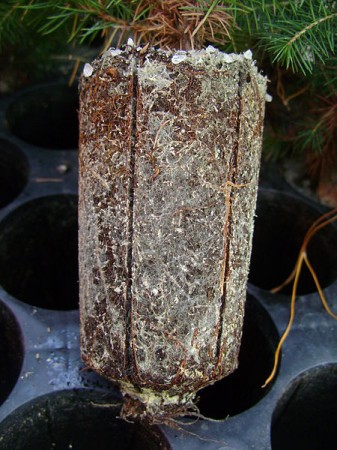Symbiosis in action (specifically an example of mutualism):

The Amanita [mushroom] family also includes some of the best-known tree-partnering fungi on Earth. Many of the mushrooms in this family are mycorrhizae — fungi that coil themselves in and around the roots of trees.
The tree provides them with food it makes topside in return for a vastly improved underground absorptive network. This network, made by the many searching filaments of the fungus, brings much more water and many more minerals to the tree than it would otherwise be able to procure for itself.
— Frazer (2012): Deadly and Delicious Amanitas Can No Longer Decompose on The Artful Amoeba Blog in Scientific American.

In fact:
Some plants are “mycorrhizal-obligate,” meaning that they can’t survive to maturity without their fungal associate. Important mycorrhizal-obligate plants in western North America are sagebrush, bitterbrush, and some native bunchgrasses.
— BLM: Mycorrhizal Fungi
This comes from an interesting article by Jennifer Frazer on Amanita mushrooms, which are so symbiotic with their plant hosts that not only do they not decay them, they actually can’t decay them.